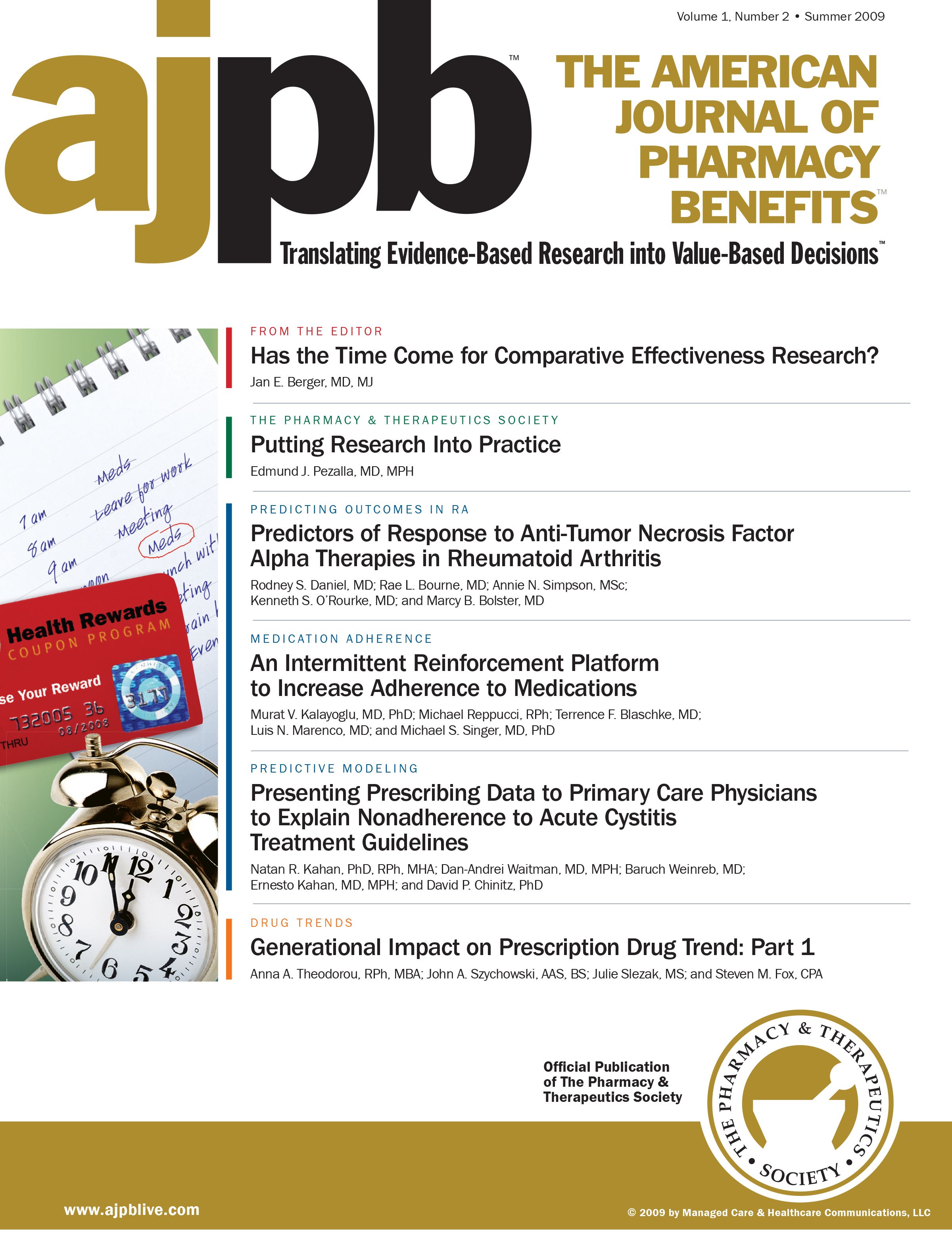Publication
Article
AJPB® Translating Evidence-Based Research Into Value-Based Decisions®
Getting a Grip on Pain Management
Author(s):
It is important that clinicians with pain management expertise be on committees that choose pain medications for formularies.
The use of pharmaceuticals for pain has increased significantly in the last 20 years. In the past, pain was considered to be only a symptom of another problem such as cancer —never a disease unto itself. However, persons with chronically painful conditions now receive medications exclusively for pain. Today prescriptions for most long-term opioid medicines are for chronic pain not related to cancer.
The types of pharmaceuticals for pain have changed, too. Historically, these pharmaceuticals were called narcotic analgesics, a term that carries undesirable associations with addiction and substance abuse. A more accurate term is opioids. These drugs may be for acute pain or for chronic pain (eg, the sustained-release preparations). Nearly all pharmaceuticals exclusively for pain are based on the basic pain-relieving quality of compounds derived from the opium poppy. The chemical modifications and changes in delivery system are what make them different from one another.
These drugs may be delivered orally, by the transdermal route or by spinal administration. They may be effective for 8, 12, 24 or more hours continuously. Some short-acting opioids effervesce in the mouth and deliver pain relief in minutes and others absorb in the stomach or intestine more slowly. Some are delivered through the skin using a patch that will last 72 hours. Still others are administered with a complicated delivery system directly into the spinal fluid using a continuous infusion pump implanted in the body. New products are being introduced regularly into the marketplace.
It is commonly accepted that chronic pain (lasting 3 months or longer) has been a profoundly undertreated illness worldwide. In the United States clinicians historically were afraid to prescribe opioid medications for more than a few weeks because both doctors and patients feared addiction. There also was a fear of violating government regulations. Most US states had clear guidelines that prevented a doctor from prescribing “narcotics” to a patient for long-term use. Although most regulatory bodies now allow the prescription of long-term opioid medications, fear of addiction sometimes remains a barrier to treatment.
Is there really that much more pain now than 20 years ago? The short answer is yes, and there is a story to explain why and how. As treatments for a variety of cancers have improved because of better therapeutic interventions, an increasingly large group of cancer survivors have pain that needs treatment. What could be worse than surviving the cancer and being left to suffer more pain? Patients undergoing cancer treatment and those in remission deserve better and more intense pain control. Those in the terminal stages of life also need pain control, as comfort becomes increasingly important.
What about people with chronic pain who do not have a terminal illness? They, too, are entitled to treatment. This group, which is larger than the cancer group, has chronic pain from many sources. Sometimes it arises from nerve damage caused by various traumas or lumbar or cervical spine surgery that was less than completely successful.
By their very nature, sustained relief pain medications (like cholesterol-lowering drugs or antihypertensive medications) are prescribed for long-term conditions and are often expensive. Any organization that has to pay for these compounds has noticed that their use is increasing.
Unlike cholesterol, there is no blood test to tell us if our pain management treatment is successful. The patients tell us how much pain they have compared with the last visit according to a visual analog scale. Both the patient reports and our interpretation of these reports are subjective.
So how do we decide which medications to include in our formularies? As we make these decisions, it is important that we have clinicians on our committees with expertise in pain management. There are many choices for a clinical end point that is less than definitive. It is incumbent on us to deliberate with caution and compassion. The medications we allow for our patients will define immediately the quality of a life—not just a better lab test result.







